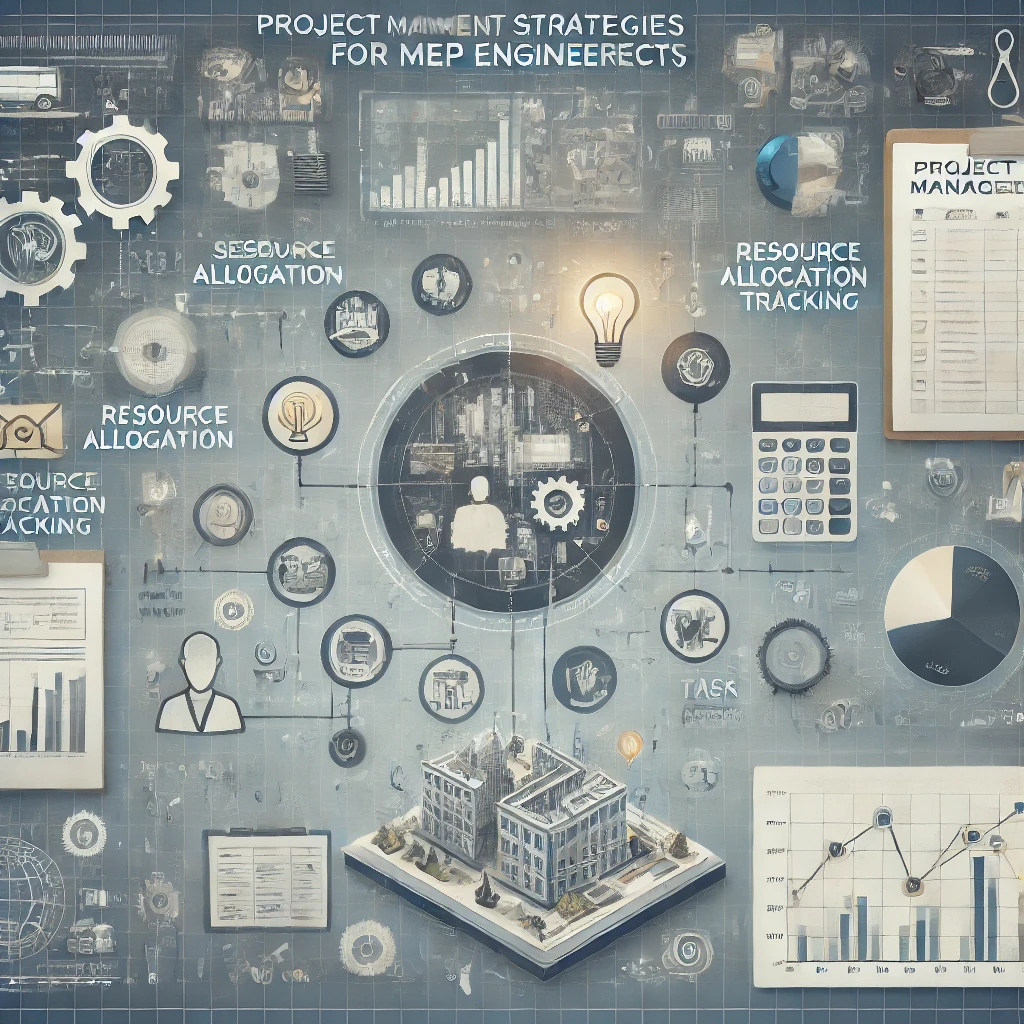Future-Ready MEP Engineering: Adapting to the Needs of Modern Workplaces and Hospitality Spaces

The rapid pace of technological innovation, coupled with shifting societal expectations, is reshaping how modern workplaces and hospitality spaces are designed and operated. Mechanical, Electrical, and Plumbing (MEP) engineering plays a pivotal role in meeting these evolving needs, enabling buildings to be smarter, more sustainable, and more adaptable.
This article explores the trends, technologies, and strategies that define future-ready MEP systems, ensuring they can cater to the demands of both workplace and hospitality environments.
The Evolving Demands of Modern Spaces
1. Workplaces: The Rise of Flexibility
As hybrid work models gain popularity, offices are transforming from static layouts into dynamic spaces designed for collaboration, creativity, and productivity. MEP systems must support:
- Flexible layouts that accommodate different work styles.
- Enhanced air quality and lighting for employee well-being.
- Energy-efficient systems to reduce operational costs and environmental impact.
2. Hospitality Spaces: The Experience Economy
Modern hotels and resorts prioritize personalized experiences, sustainability, and technology-driven convenience. Guests expect seamless comfort, intuitive controls, and eco-conscious practices, all of which depend on robust MEP design.
Trends Shaping Future-Ready MEP Engineering
1. Integration with Smart Technologies
The Internet of Things (IoT) is revolutionizing how MEP systems operate:
- Smart Sensors: Devices monitor temperature, humidity, and occupancy, enabling systems to adapt in real-time.
- Building Management Systems (BMS): These platforms centralize control over HVAC, lighting, and security, improving efficiency and responsiveness.
- Voice-Activated Controls: Popular in hospitality, these systems allow guests to control room settings with ease.
For insights into IoT integration, visit IoT For All.
2. Focus on Energy Efficiency and Sustainability
Sustainability is no longer optional—it’s a priority. Future-ready MEP systems incorporate:
- Energy-Efficient HVAC Systems: Variable refrigerant flow (VRF) systems and heat recovery technologies minimize energy use.
- Renewable Energy Sources: Solar panels, wind turbines, and geothermal systems reduce dependence on fossil fuels.
- Green Certifications: LEED and WELL certifications incentivize the adoption of sustainable practices.
Learn more about sustainable certifications at USGBC.
3. Enhanced Air and Water Quality
Post-pandemic, indoor air and water quality have become critical concerns:
- Air Filtration Systems: Advanced HEPA filters and UV-C technology improve air cleanliness.
- Water Treatment Systems: Smart plumbing ensures clean, safe water while minimizing waste.
Explore air quality improvements at ASHRAE.
4. Modular and Scalable Design
Workplaces and hotels must evolve with user needs. Modular MEP systems allow spaces to:
- Expand or shrink without significant structural changes.
- Adapt to emerging technologies and operational requirements.
5. Emphasis on Resilience
Unpredictable events such as natural disasters or pandemics underscore the need for resilient MEP systems:
- Backup Power Systems: Hotels and offices depend on reliable power to maintain critical operations.
- Redundant Water Systems: Ensure continuous water supply even during disruptions.
Strategies for Implementing Future-Ready MEP Systems
1. Early Integration in Design
Integrating MEP engineering during the early stages of design ensures seamless compatibility with architectural and functional goals. Collaboration between architects, engineers, and technology specialists is critical.
2. Embracing Building Information Modeling (BIM)
BIM facilitates precise MEP design, simulation, and collaboration:
- Detects clashes between systems early in the planning phase.
- Improves project timelines and reduces costs.
- Provides a digital twin for ongoing maintenance.
Learn more about BIM technology at Autodesk.
3. Prioritizing Data-Driven Operations
Modern MEP systems generate valuable data on energy consumption, system performance, and maintenance needs. Leveraging this data enables:
- Predictive maintenance to prevent costly failures.
- Optimization of energy use.
- Real-time adjustments to enhance comfort and efficiency.
4. Retrofitting Existing Buildings
For older buildings, retrofitting is essential to meet modern standards. Common upgrades include:
- Replacing outdated HVAC units with energy-efficient models.
- Upgrading lighting systems to LEDs.
- Installing smart controls for greater automation.
Explore retrofit solutions at DOE Retrofit Program.

Case Studies: Success in Future-Ready MEP Engineering
1. Modern Workplaces: The Edge, Amsterdam
Known as the greenest building in the world, The Edge incorporates:
- IoT-enabled MEP systems for lighting and climate control.
- Solar panels that generate more energy than the building consumes.
- Smart sensors that adjust HVAC settings based on occupancy.
Learn more about The Edge’s design at The Edge Overview.
2. Hospitality Spaces: Marriott’s Innovation Lab
Marriott International’s test hotel in Bethesda, Maryland, showcases:
- Modular HVAC systems for flexible room configurations.
- Advanced BMS platforms to monitor energy use.
- Eco-friendly plumbing fixtures that reduce water consumption by 20%.
Discover Marriott’s sustainability efforts at Marriott Sustainability.
Economic and Environmental Benefits
1. Cost Savings
Investing in future-ready MEP systems results in significant operational savings:
- Lower energy and water bills.
- Reduced maintenance costs due to predictive monitoring.
2. Enhanced Brand Reputation
Modern workplaces and hotels that adopt sustainable, tech-savvy MEP systems appeal to eco-conscious consumers and employees.
3. Regulatory Compliance
Adhering to green building standards ensures compliance with local and international regulations, avoiding penalties and boosting eligibility for incentives.
Challenges in Adopting Future-Ready MEP Systems
1. High Upfront Costs
While advanced systems require significant investment, long-term savings often justify the expense. Financing options, such as energy performance contracts, can help.
2. Integration with Legacy Systems
Older buildings may require substantial retrofits to support modern MEP technologies. Collaborative planning is essential for minimizing disruptions.
3. Skill Gaps
Operating advanced systems demands skilled technicians and engineers. Continuous training is critical to ensuring successful implementation.
Conclusion
Future-ready MEP engineering is the cornerstone of modern workplace and hospitality design, enabling buildings to adapt to evolving needs while maintaining operational efficiency and sustainability. By integrating smart technologies, prioritizing sustainability, and leveraging modular designs, these systems deliver both immediate benefits and long-term resilience.
As the demand for flexible, eco-conscious spaces continues to grow, investing in advanced MEP systems will not only enhance functionality but also position businesses as leaders in innovation. For more information on future-ready engineering practices, visit the Green Building Council.
Category:



